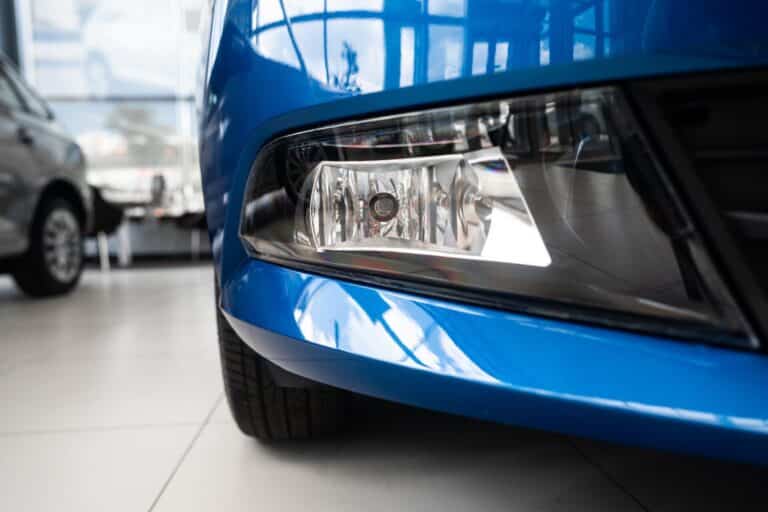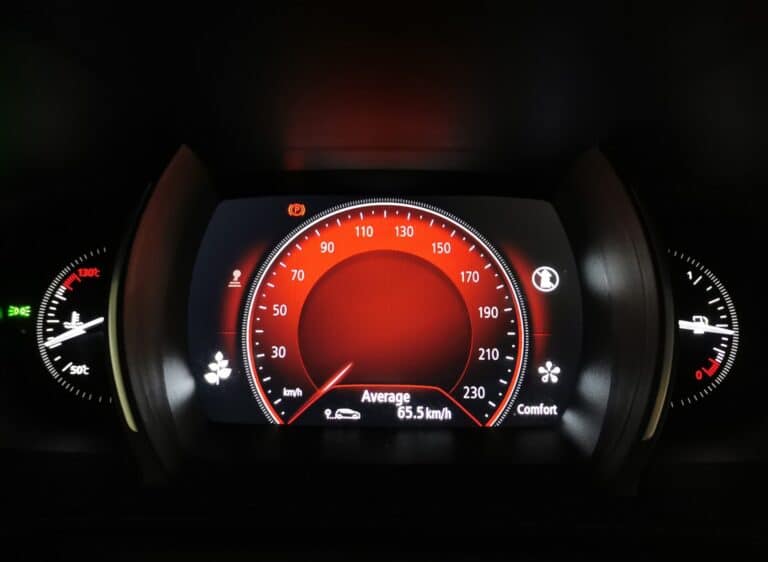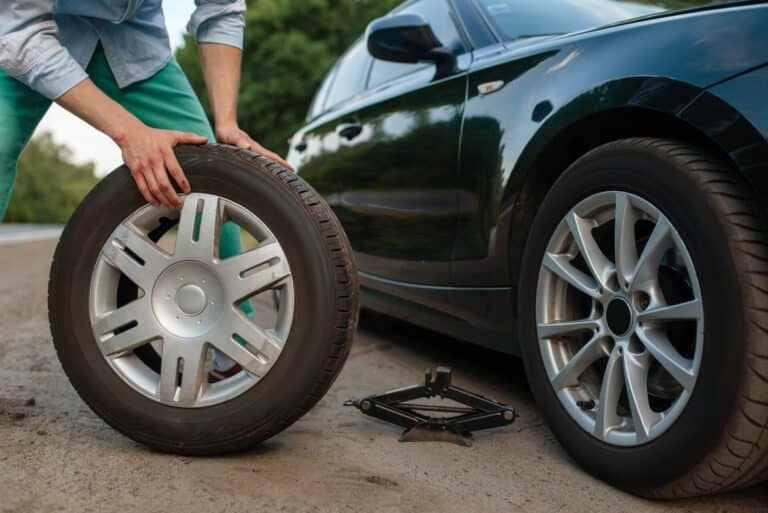Does Cadillac XT4 Have Run-Flat Tires? (Beginners Guide)
In vehicles, features like spare tires, sealants, and inflator kits help remedy the unpleasant experience of tire punctures.
These items have been beneficial so far but inadequate in extreme cases of tire damage such as blowouts.
Run-flat tires salvage the situation in instances of sudden blowouts, enabling mobility even when they are punctured.
This ability makes them the preferred type of tires in some vehicles, but does the Cadillac XT4 feature them?
The Cadillac XT4 doesn’t come with run-flat tires as standard. Instead, this SUV comes with either a compact tire or a tire inflation kit, depending on the trim level. However, you can fit run-flat tires with matching specifications on your XT4.
What Are Run-Flat Tires?
Run-flat tires are pneumatic tires whose designs allow continuous motion even if they are punctured or deflated.
You can drive a vehicle with run-flat tires even with the tires punctured until the driver locates an auto shop for a tire change.
It is easy to confuse run-flat tires with spare tires, but these two are entirely different and so are their functions.
Spare tires are regular replacements for punctured tires and have no special features to enable them to perform when punctured.
On the other hand, run-flat tires are the vehicle’s original tires that don’t require immediate replacement when punctured.
There are different types of run-flat tires based on three different technologies used in making them.
These technologies include:
#1. Self-supporting Reinforced tires:
In the self-supporting run-flat tire technology, the tire’s sidewall is made thicker and stiffer to withstand punctures.
You won’t even know you have a puncture without your vehicle’s tire pressure monitoring system with self-supporting tires.
Self-supporting run-flat tires support vehicle weight up to a distance of 50 miles at a speed of 50mph.
However, this can damage the tire and the wheel, more so if the puncture occurs in the tire’s sidewall.
#2. Self-sealing tires:
Self-sealing tires have an extra layer in them that help to seal the tires when they are punctured.
This ability prevents pressure loss by preventing air loss from the tire.
Some tires are also retrofitted with tire sealants that perform similar functions of automatically sealing punctures.
#3. Auxiliary-supported tires:
in these tires, there is a ring attached to the tire’s interior. This ring supports the vehicle’s weight should the tire lose pressure due to a puncture.
The ring is built to carry the vehicle load over long distances and prevents the tire from slipping off the rim.
Does Cadillac XT4 Have Run-Flat Tires?
The Cadillac XT4 doesn’t come standard with run-flat tires.
Run-flat tires are a standard feature on many luxury cars like the BMW series, but the XT4 is yet to be among such vehicles.
It is obvious with the inclusion of either a spare tire or tire repair kit in the Cadillac XT4.
However, you can replace the conventional tires on an XT4 with run-flat tires if you can tune their suspensions.
Furthermore, they have to be of the same dimension as run-flat tires to replace conventional ones.
Tire brands indicate run-flat tires with some codes.
These codes and their meanings include:
- SSR (Self-Supporting Runflat)
- ROF (RunOnFlat)
- EMT (Extended Mobility Technology)
- RSC (Run-flat System Component)
- ZP (Zero Pressure)
- RFT (Run-Flat Tire).
Therefore, if you these codes on Cadillac XT4 tires, it means such tires are run-flat tires.
Pros and Cons of Run-flat Tires
Pros
Run-flat tires offer some advantages over conventional tires in vehicles. The pros of having these tires in your vehicles include:
#1. Ability to drive on a flat tire:
The main advantage of a run-flat tire is its ability for continued mobility even after going flat.
While using run-flat tires, drivers don’t need to worry about replacing punctured tires under unpleasant conditions.
They can drive up to a distance of 50 miles with run-flat tires, which should be enough to get replacements.
#2. Stability after blowouts:
Blowouts can be catastrophic for vehicles running on conventional tires. They lose stability as the tires can’t support their weight.
Fortunately, this is not the case with vehicles running on run-flat tires.
Run-flat tires support the weight of vehicles well enough, even without air.
Thus, weight transfer and destabilization are not pronounced during sudden loss of air pressure.
Therefore, steering and general handling remain normal, resulting in the vehicle’s stability.
#3. Less vehicle weight:
Run-flat tires on vehicles eliminate the need for spare tires and tire replacement tools.
The absence of these makes vehicles weigh less, elevating their performance in some aspects.
The weight difference may not be significant, though, as run-flat tires also add extra weight to cars.
#4. More trunk space:
Spare tires are kept in the trunks in some vehicles, consuming a significant amount of the trunk space.
Run-flat tires rid vehicles of the need for spare tires, thus freeing up more storage space in the trunks of such vehicles.
Cons
Although run-flat tires are advantageous in vehicles, they also have some downsides.
The cons of having run-flat tires on vehicles include:
#1. No spare tire:
As much as the absence of a spare tire is an advantage, it is also disadvantageous.
Before replacing them, drivers may need to drive more than the 50-mile limit for punctured run-flat tires.
When this is the case, he may need a spare that is unavailable, thus, leaving him stranded.
#2. Low air pressure is harder to detect:
Since punctured run-flat tires perform normally, it is harder to detect when they are low on air pressure.
Therefore, a functioning tire pressure monitoring system is necessary for the vehicles for frequent tire pressure checks.
#3. Cost:
Run-flat tires are usually more expensive than conventional tires and less available.
Extents of damage also may render run-flat tires irreparable; thus, they need complete replacement.
However, replacing tires every time they get damaged is sure financially exhausting.
#4. Hard ride:
The stiff sidewall of run-flat tires results in harder rides, especially over bumps.
For this reason, cars with factory-installed run-flat tires have modified suspensions to counter the harsh rides.
Conclusion
Run-flat tires offer a reasonable level of insurance against the ugly experiences associated with tire punctures and blowouts.
Many new vehicles come with standard run-flat tires, including some Cadillac models.
However, the Cadillac XT4 still comes fitted with conventional tires as standard, which you can, of course, replace with run-flats.






